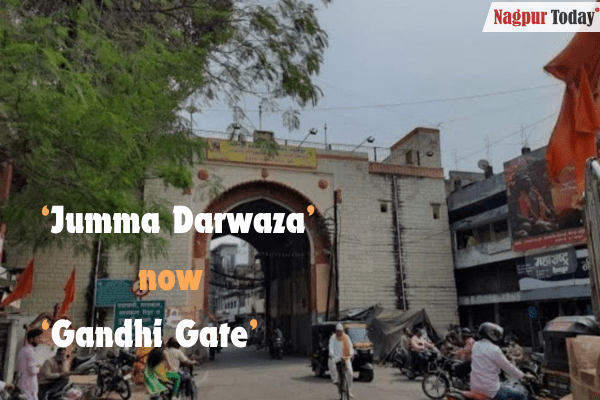
Nagpur: As India prepares to celebrate its 78th Independence Day on August 15, 2024, it’s important to remember the pivotal role Nagpur’s revolutionaries played in the country’s fight for freedom. The city, with its rich and ancient history, is home to several landmarks that serve as reminders of this struggle. Among them is the ‘Gandhi Gate’ in the Mahal area, a historic monument that commemorates the martyrdom of nine brave souls during India’s fight for independence.
The Legacy of ‘Jumma Darwaza’ (Gandhi Gate) – A Martyr’s Memorial
Located in the heart of Nagpur’s Mahal area, the ‘Jumma Darwaza,’ now known as ‘Gandhi Gate,’ was originally built by Chand Sultan, the son of Gond king Bakht Buland Shah. This gate, steeped in history, became a symbol of resistance during India’s first war of independence in 1857, sparked by revolutionary Mangal Pandey’s uprising against British rule in Meerut. The rebellion’s impact was felt across the nation, including in Nagpur, where the British began arresting revolutionaries.
At Gandhi Gate, nine freedom fighters were executed by the British: Nawab Qadir Khan, Siddiq Ali Khan, Akbar Ali Khan, Vilayat Ali Khan, Bunyad Ali Risaldar, Yusuf Khan, Uniform Major, Moinuddin Husain Jamadar, Inayatullah Khan, and Maratha soldier Waghle Jamadar. Their bodies were left hanging at the gate for three days as a grim warning. Today, Gandhi Gate stands as a witness to their sacrifice, while their graves remain at Sitabuldi Hill, known as the ‘Nine Gazi Memorial.’
The Establishment of Gandhi Gate in Mahal
In 1735, Raghuji Maharaj I established Nagpur as his capital and constructed a grand palace in the Mahal area. The palace complex housed several temples, including those dedicated to Patal Devi, Nageshwar, Har Hanuman Khidki, and Shri Vitthal Rukmini. It also contained the residence of Raghuji Maharaj’s wife, Rani Bankabai Saheb. The palace once stretched from the current site of Kotwali Police Station to D.D. Nagar Vidyalaya, with its intricate carvings still visible today.
In 1818, the British set fire to the palace, and the flames raged for six months, a testament to its immense scale. While much of the palace was destroyed, some gates, such as Kalyan Darwaza, Shukrawar Darwaza (now Gandhi Gate), Bhutya Darwaza, and Patharphod Darwaza, still stand proudly. Over time, the area became known as Mahal, a name that now denotes the bustling marketplace that has emerged around the historic site. The Mahal area today is a vibrant mix of old and new, with ancient wadas, schools like D.D. Nagar Vidyalaya, Lokanchi Shala, Hindu Girls’ School, and Binzani College coexisting alongside the modern market.

























